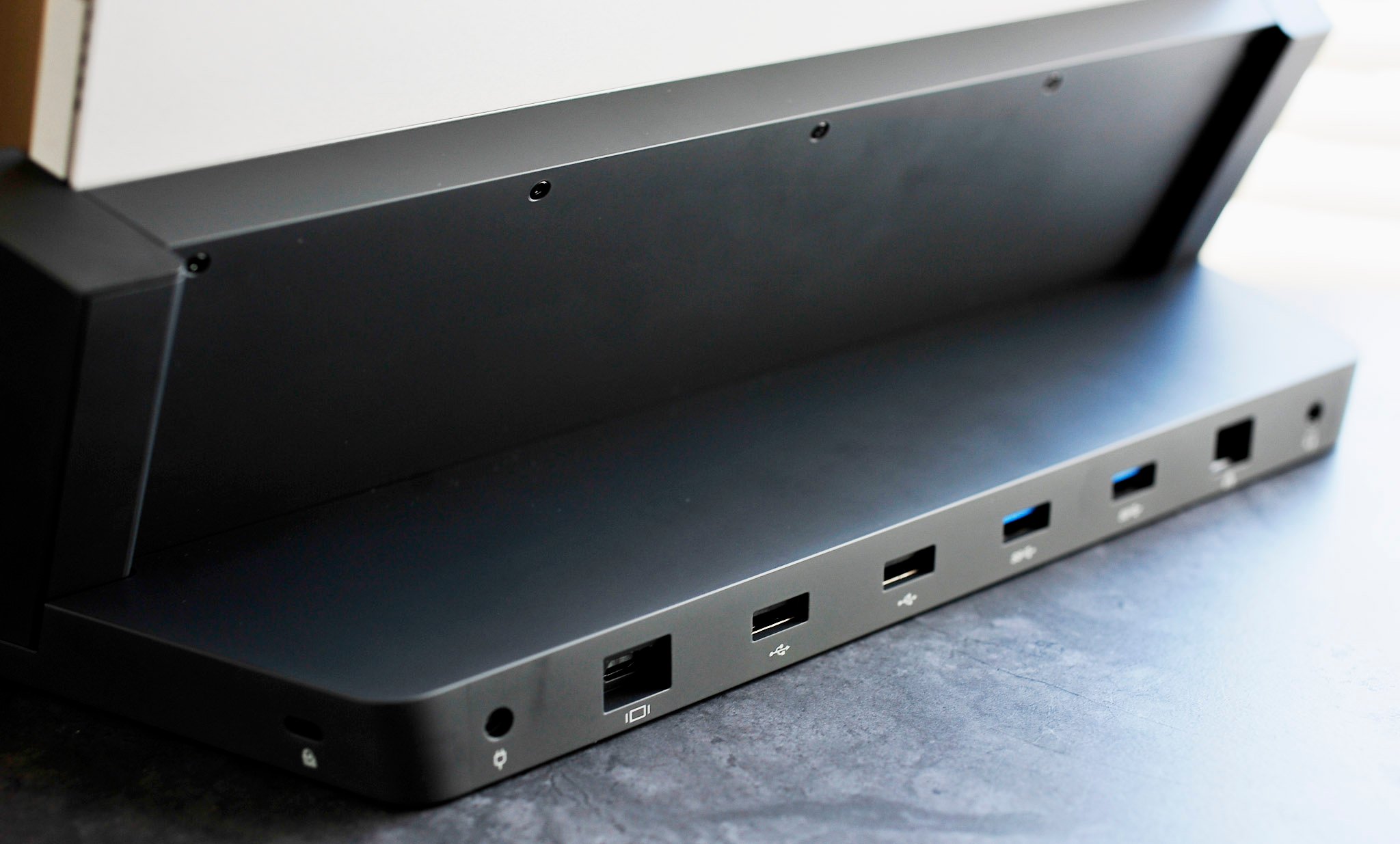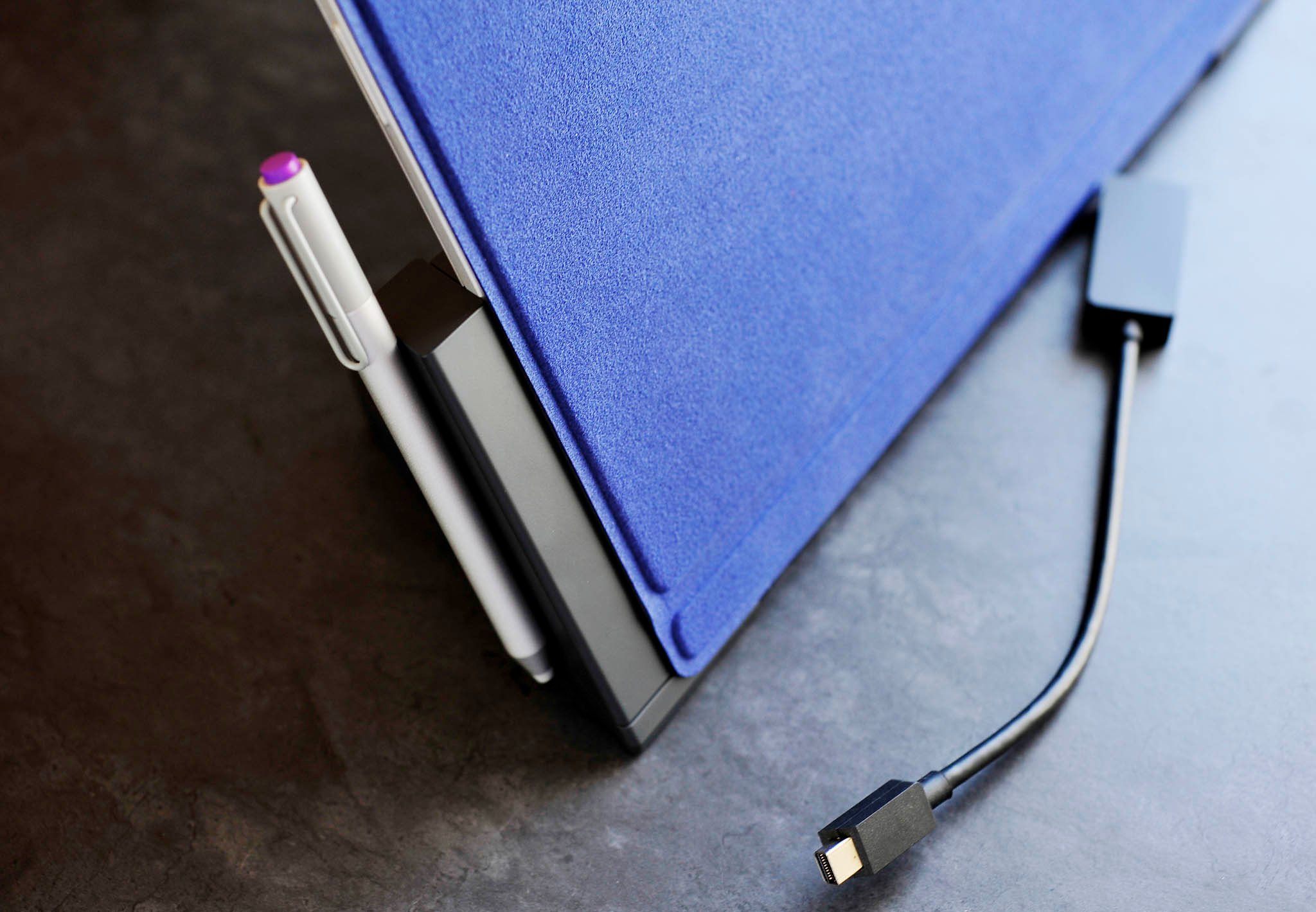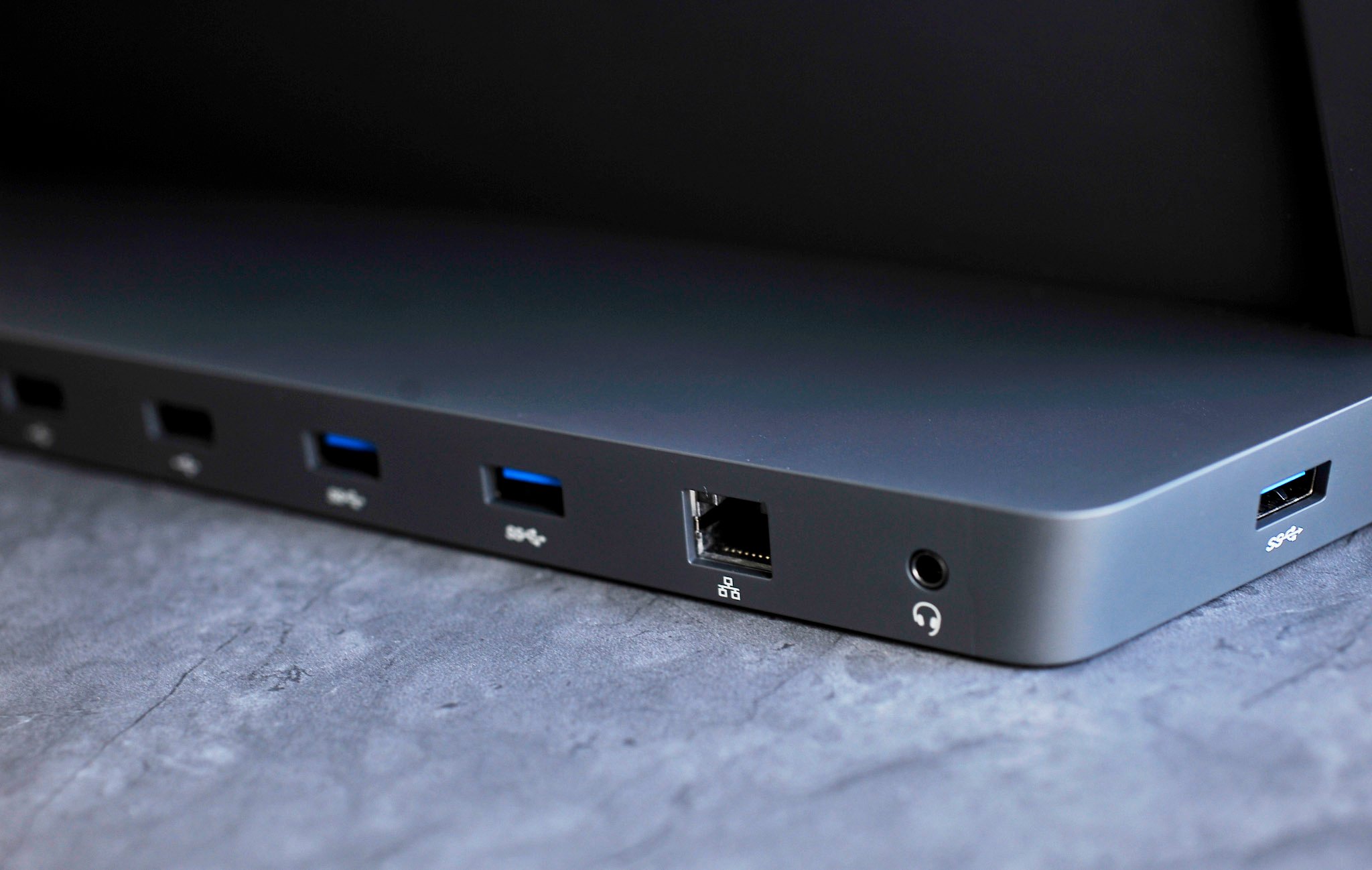Quick review of the Surface Pro 3 Docking Station

Starting on Friday, Microsoft began to sell the new Surface Pro 3 Docking Station at various retail locations. So besides being a laptop and tablet replacement, your Surface Pro 3 can do triple duty as a full desktop replacement too.
The $199 accessory is by no means 'cheap' – in terms of either price or quality – but it is awesome. I managed to grab one from my local Microsoft Store in Natick, MA. Here are my initial thoughts, including a hands on video.
The build quality of the Docking Station is still top notch. It is not too heavy, nor is it light and almost entirely made from a thin, metal material, presumably something akin to VaporMg (magnesium-aluminum). Microsoft puts the specs at 1.43 pounds (650g), and its overall footprint is subtle only adding about an inch on each side.
Interestingly, on the left side of the docking station, the area is magnetic so that the new pen can attach for when not in use. It is clever and it works well.
Placing the Surface Pro 3 into the station is super easy and requires very little, if any, lining up. In other words, the fuss level of using this is extremely low. Once docked, you closed the sides, and this locks in the Surface, including a new power adapter, which also handles the display out, audio out and Ethernet.
Microsoft designed the Docking Station so that everything on the Surface Pro 3 is fully accessible when docked. Such things as the volume keys, the USB 3.0 and mini Display Port are all available to use, adding to the already generous port selection on the Station itself. Speaking of ports, here is what you get:
- Gigabit Ethernet port for up to 1 Gbps wired network speeds
- Mini DisplayPort for HD video of up to 4096x2304 resolution
- Five USB ports (three USB 3.0; two USB 2.0); the Surface's 3.0 USB port is also exposed for six in total
- 48W charging system for charging and usage at the same time
You do need to pick up a mini DisplayPort adapter for HDMI, which is another $40 (or $80 if you want to use two external monitors). The Surface Pro 3 can push up to a 4K monitor; however, most reports note that it is limited to 30Hz (instead of the preferred 60Hz). This limitation is a common complaint that a many laptops and Macs suffer from although at least one reader told me you could run two displays within the 4K and achieve 60Hz.
All the latest news, reviews, and guides for Windows and Xbox diehards.
Currently, I have the Surface Pro 3 outputting to a traditional IPS 1080P display, which looks 'ok.' Fonts can be thin sometimes, and the output is not as nice compared to my Dell XPS 27. I am considering getting a Samsung S27D850T 27-Inch at 2560 X 1440 Resolution, which should run a bit better than 4K.
The only downside so far is when you enable the Docking Station it takes over the sound from the Surface Pro 3. This change means you need either connected speakers or headphones to hear anything from the Surface (perhaps there is a way to override it; I have not really looked yet). [Edit: See the comment below from Tony, which explains how to get this to work.]
In conclusion, I am delighted with the Docking Station and anyone picking up or considering a Surface Pro 3 should give it serious consideration. Although the $240 ($199 plus HDMI adapter) is even more money, if you are in the market for a desktop replacement that can also sub as a laptop and tablet, there is nothing that comes close. Indeed, it truly is a remarkable feat to have something this small and light act as a desktop, but nimble enough to be a tablet.
The Surface Pro 3 as a 3-in-1 is a whole other class of hardware, and it may steer you to grab the more powerful Core i7 version, which makes much more sense with this setup.
Do you have the Docking Station for the Surface Pro 3? Tell me what you think of it in comments, or if you have any questions, feel free to ask. Head into our dedicated Surface Pro 3 forums for more discussion or read my full review.
Order the Surface Pro 3 Docking Station from Microsoft.

Daniel Rubino is the Editor-in-chief of Windows Central. He is also the head reviewer, podcast co-host, and analyst. He has been covering Microsoft since 2007 when this site was called WMExperts (and later Windows Phone Central). His interests include Windows, laptops, next-gen computing, and wearable tech. He has reviewed laptops for over 10 years and is particularly fond of 2-in-1 convertibles, Arm64 processors, new form factors, and thin-and-light PCs. Before all this tech stuff, he worked on a Ph.D. in linguistics, performed polysomnographs in NYC, and was a motion-picture operator for 17 years.




